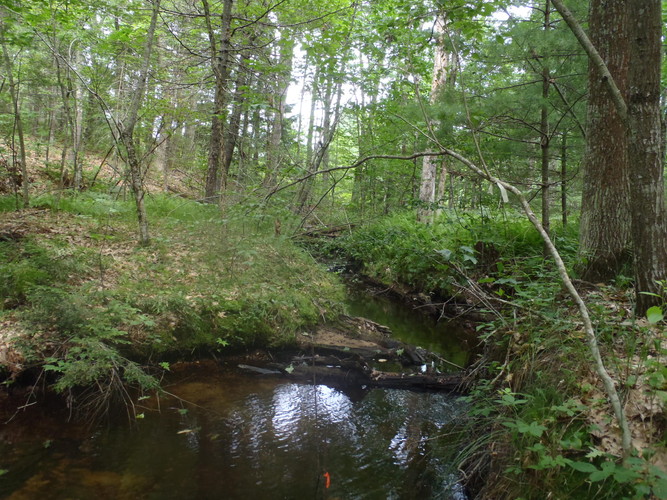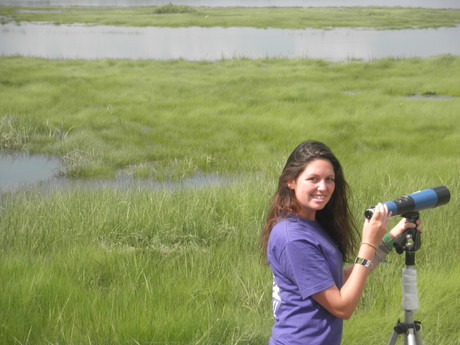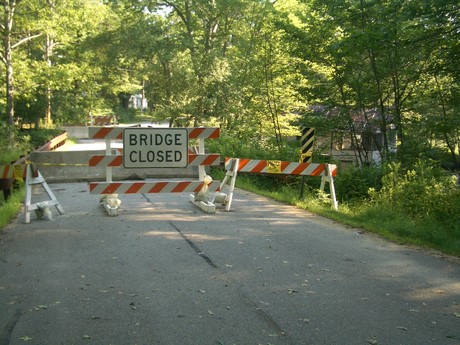The Wrack
The Wrack is the Wells Reserve blog, our collective logbook on the web.
The Wrack is the Wells Reserve blog, our collective logbook on the web.
 Three angles of investigation into three waterways flowing through three municipalities have reached one encouraging conclusion: The Merriland River, Branch Brook, and the Little River are ecologically healthy and the people largely responsible, those living in the combined watershed, know and appreciate it.
Three angles of investigation into three waterways flowing through three municipalities have reached one encouraging conclusion: The Merriland River, Branch Brook, and the Little River are ecologically healthy and the people largely responsible, those living in the combined watershed, know and appreciate it.
The design for our Sustaining Coastal Landscapes and Community Benefits project, the first study of its kind, drew from the sciences of ecology, economy, and communications. Reserve staff and their colleagues from Clark University looked at streamside buffers in Sanford, Kennebunk, and Wells to find out how they affect life in the water and how members of the community value them.
 While spending my summer as a research intern at the Wells Reserve, I have had the opportunity to participate in a project monitoring how land development in southern Maine is affecting freshwater ecosystems that provide habitat for many macroinvertebrate and fish species like brook trout. Though it has been observed that the land development occurring here has not reached the scale of the degradation found in other areas along the east coast, like the Chesapeake Bay region, it is imperative that this does not change as future development occurs. When new homes are built in an area, there are simple steps local landowners can take to help preserve the existing natural ecosystems on or around their own property.
While spending my summer as a research intern at the Wells Reserve, I have had the opportunity to participate in a project monitoring how land development in southern Maine is affecting freshwater ecosystems that provide habitat for many macroinvertebrate and fish species like brook trout. Though it has been observed that the land development occurring here has not reached the scale of the degradation found in other areas along the east coast, like the Chesapeake Bay region, it is imperative that this does not change as future development occurs. When new homes are built in an area, there are simple steps local landowners can take to help preserve the existing natural ecosystems on or around their own property.
 This is my final week in Maine as a research and coastal training program intern for the summer. I have mainly been studying the detrimental effects of nitrogen runoff. The three-year project that I helped start looks at Branch Brook and the Merriland River in the Little River Watershed. We selected 20 sites to analyze nitrogen runoff and how it affects the fish, the macroinvertebrates, the river habitat, and the water quality itself.
This is my final week in Maine as a research and coastal training program intern for the summer. I have mainly been studying the detrimental effects of nitrogen runoff. The three-year project that I helped start looks at Branch Brook and the Merriland River in the Little River Watershed. We selected 20 sites to analyze nitrogen runoff and how it affects the fish, the macroinvertebrates, the river habitat, and the water quality itself.
Flooding in York County — is it becoming more common? Roads impassable, bridges washed out, basements full... the stories have become all too familiar in recent years.
 The Mother's Day storm in May 2006 seemed an anomaly till the Patriots' Day storm hit in 2007. This March, the Wells Reserve measured 16 inches of rainfall, 5 inches more than Portland's record-setting 11. The roads closed and the sump pumps hummed again.
The Mother's Day storm in May 2006 seemed an anomaly till the Patriots' Day storm hit in 2007. This March, the Wells Reserve measured 16 inches of rainfall, 5 inches more than Portland's record-setting 11. The roads closed and the sump pumps hummed again.
It is probably a rare coastal beachfront property owner who is not aware that beaches are dynamic systems that erode and accrete in response to storms, sediment supply, rising sea level, and the proximity of sea walls, jetties, and other forms of coastal "armor." Many beachfront owners are also aware that "natural" barrier beaches and their dune systems are able to persist in the face of sea level rise by transgressing, or migrating shoreward.